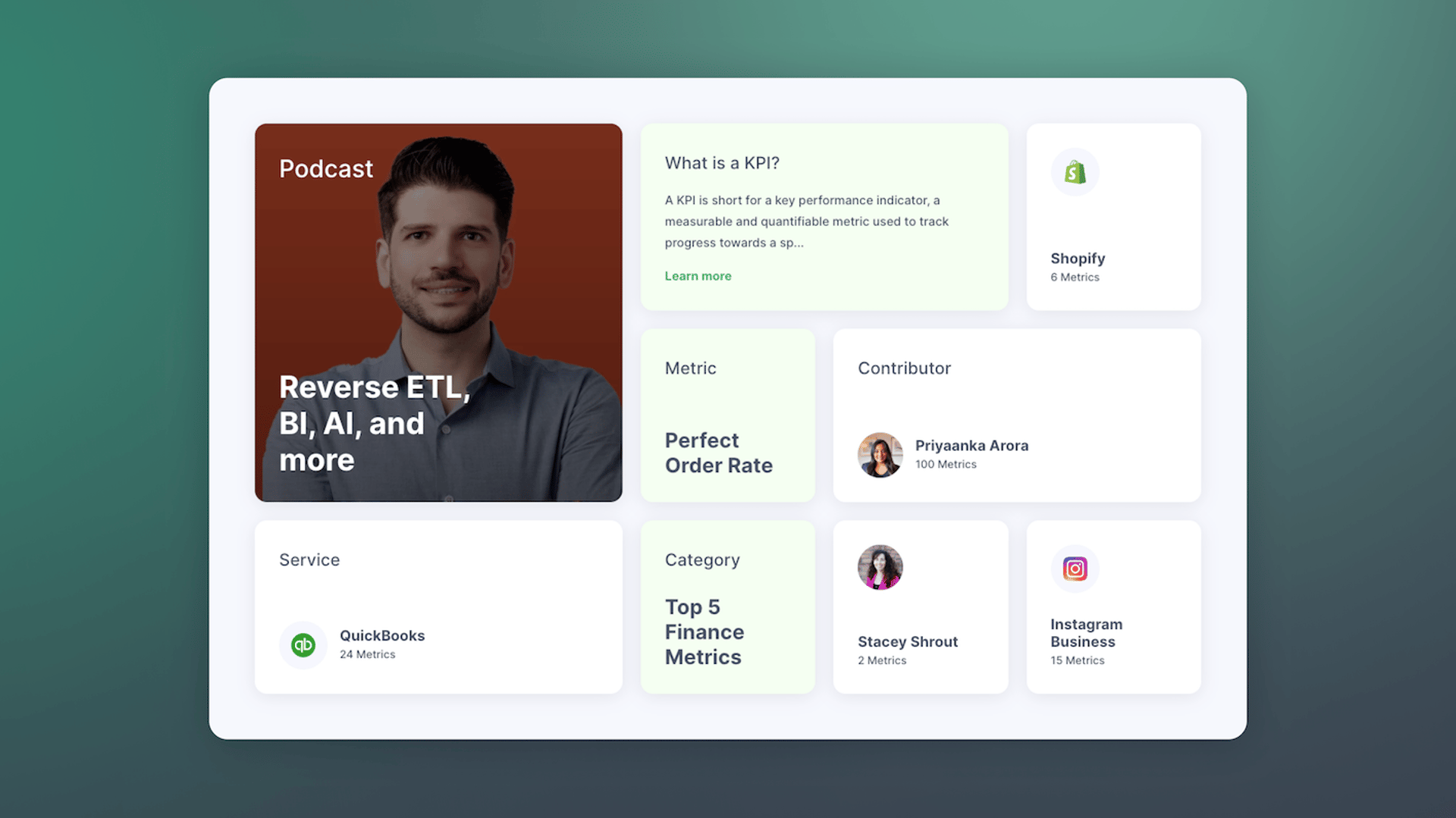How to lead from the bottom on making your company data-driven

Published 2023-02-13
Summary - Many people think that becoming “data-driven” is as simple as implementing a tool like Google Analytics or Adobe Analytics and then studying the results. In reality, implementing a data-committed culture at your company is far more complex. It means infusing your organization with an almost complete culture shift.
Many people think that becoming “data-driven” is as simple as implementing a tool like Google Analytics or Adobe Analytics and then studying the results.
In reality, implementing a data-committed culture at your company is far more complex. It means infusing your organization with an almost complete culture shift.
But with that drive for creating a data-driven culture comes big challenges – namely, getting buy-in from corporate executives and other higher-ups at your company.
The challenges are many, particularly for those who are lower down in the pecking order, new to their organizations or just starting out in their careers.
In this post we’ll delve into how you can take your use of data from the low-level implementation level to building a data-driven culture in your organization.
From dashboards and analytics to full-on culture shift
You already know the importance of implementing analytical tools, building reports on data and creating dashboards. But those are just a small part of what it takes to use data to get buy-in for a culture of data and advance your career.
Many businesses think that being data-driven only involves certain departments where numbers have traditionally played a role, such as accounting or marketing. Others think it’s enough to hire a few people with the word “data” in their title, shuffle them off to a room together and call it a day.
But if you think that gives you licence to claim your company is data-driven, you’re doing it wrong. A commitment to being data-driven should pervade nearly every element of what your company does.
Yes, measurement is important. Without a company-wide commitment to using data to inform decisions, though, that measurement won’t have nearly the same impact.
So, what does it mean to be “data-driven”?
A few things, but generally they can be grouped around a few themes:
- It means setting company-wide key performance indicators that give everyone in the organization an idea of underlying strategic goals.
- It means regularly checking performance against those goals and using other metrics to make adjustments
- It means making everyone in the organization – not just certain departments or the people with “data” in their title – aware of and committed to data best practices
Clearly this is too much for even the most charismatic entry- or mid-level staff member to implement company-wide without the support of an executive.
Why getting buy-in on data culture is difficult
The drive to be data-driven tends to skew younger in many instances.
Digital marketing, for example, is a relatively new marketing subset. That makes it more heavily populated with younger workers who are more likely to be a contributor or advisor rather than manager or director. They frequently don’t have control over budgets or necessarily meet frequently with top-level decision-makers.
Those who work in digital marketing and other data-heavy fields are also hired frequently for their highly-technical knowledge. That means they end up taking on roles that are heavily tactical – not strategic.
The result is that digital marketers and other “data people” frequently operate in a silo that doesn’t frequently yield them access to higher-level decision-makers.
That’s why any attempt to “lead from the bottom” on creating a data culture has to start with getting the attention of the executives in your organization.
The challenges of being “data-driven”
But before you can get buy-in from the C-suite, you need to understand why many companies are reluctant to change toward data. There are many reasons why executives won’t make the switch, including:
Cost
Being data-driven requires at least some investment in measurement tools, and many entry- or mid-level employees don’t have sufficient control over budgets to implement those tools.
Time
From taking the time to convince your executives of the need to use data, to actual implementation once you actually get buy-in, making the transition to “data-driven” is going to require an investment of time that is frequently spent on maintaining the status quo.
Shifting culture
The biggest challenge, though, is changing the culture at your workplace. Being data-driven is about way more than just implementing a tracking program or placing a few pixels on your website.
And that’s why you need executive buy-in.
Convincing the C-suite
Making the transition requires a more or less top-down shift in how your company does business – something that’s next to impossible for someone in an entry- or mid-level position to implement on their own.
The only way to make that change, then, is to get some executives at your company to support your push for data.
“For a data initiative to be successful, all employees must be on board and put data at the heart of their decision making,” writes James Ovenden at Innovation Enterprise.
How to get visibility for your work on data
Use data
I know, I know – this might sound obvious. But your best bet for getting buy-in from the c-suite on a data initiative is...data. Try to dig up some numbers that prove you’re lacking on the data front. Show how other organizations (or, better yet, your competitors) have improved their business model through the use of data. Because ultimately that is what it will come down to: Showing how an investment of time and money will boost your company’s bottom line.
Using data can also be a great way to accelerate your career. Wherever possible, keep track of your accomplishments and try to express them with numbers. Talking about how you’re a committed and inventive sales person is a lot less effective than saying you helped increase revenue on six accounts by 75 per cent.
Start small
Yes, being data-driven requires a transformational shift that at some companies will almost feel like everything spun upside down. But you have to start somewhere, right?
Some analytics tools have a relatively low barrier to entry. Google Analytics, for example, is completely free and somewhat easy to install on most websites. Get it set up and then start pulling some reports that show a small slice of how data can improve your business.
Connect data to strategy
One of the most underrated benefits of a data-driven culture is how it forces you to deliberate and decide on strategy.
Take deciding on some KPIs, for example. KPIs are, by their very nature, a whittled down list of the most important metrics that drive business performance. They can’t be every metric under the sun. They are the metrics that really underscore what your key business goals are.
Why does that matter for strategy?
Because, as we’ve written before, “KPIs are strategic. Identifying your KPIs forces you to sit down and think about your long-term objectives.”
But developing some KPIs will do more than help solidify your company’s strategy. It’ll also be a useful exercise in engaging low- and mid-level employees in the “big picture.”
That’s because KPIs can help alleviate a feeling, endemic at the lower levels of many organizations, of not being able to see how their individual work is contributing to organization-wide goals. With KPIs, everyone can see the end goals toward which your company is working – and their role in helping achieve them.
Don’t get down in the weeds
Data analysis is a highly-technical field, requiring a fair amount of implementation and a decent working knowledge of how to understand it.
Resist the urge to get too technical with the C-suite. Because they’re executives, they’re focused on high-level strategic issues, not low-level tactical ones.
Focus instead on how becoming data-driven will help to drive long-term, underlying performance.
Tell a story
There’s a misconception out there that the “lesson” from a data set jumps off the page at you. That all you need to do is look at an Excel spreadsheet or Google Analytics report and you’ll slap your head and say “NOW I know what to do!”
The reality is far different. In reality, we use data to tell stories.
Example: Say you’re looking at data from an e-commerce store and find that there’s a huge drop-off in funnel traffic at the checkout stage. This could mean any number of things – maybe they find shipping too pricey, or maybe that page doesn’t work well on a particular device. To find out more you’d probably need to dig into the data and run a few tests to see what’s happening.
The result will be, in some form, a story built on data: People are finding shipping too pricey, so they’re choosing to abandon their shopping carts. Or maybe the story is that the page they’re loading doesn’t work well on a particular device. Or maybe your customer is abandoning their cart because they’re doing a quick Google Search for a coupon code for your product and then re-starting their checkout process to get the discount.
It could be any number of things. The point, though, is this: Numbers on their own don’t tell a story. They require you to put them to work for your narrative.
Be visual
Throwing out a jumble of numbers is the fastest way to a manager’s “Mark As Read” button. Instead, wherever possible, you should express data visually.
Infographics and graphs can go a long way to getting your point across. Relatively unsophisticated tools like Excel or Canva are great for producing great images for cheap.
If you have the budget (or support) to take it a step further, a TV dashboard is also a great tool for showing your data visually.
Bringing it all together
Do you have a success story with using data to build your career and start a culture shift from the bottom of your organization? Let us know in the comments.
Related Articles

12 Important Sales Enablement Metrics You Shouldn't Miss
By Grace Lau — September 19th, 2025
Why Are KPIs Important?
By Danielle Poleski — August 5th, 2025
How smart businesses are making better decisions
By Alastair Barlow — November 22nd, 2023

